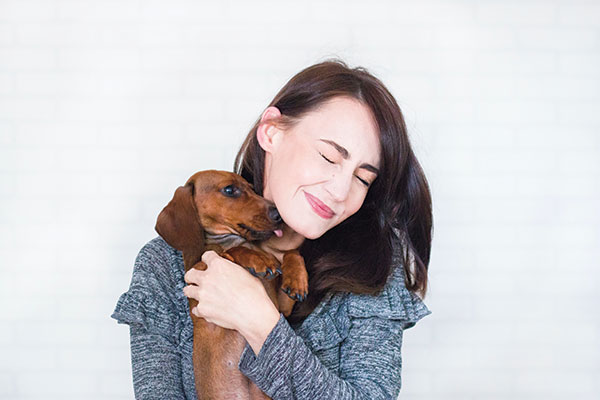The worldwide pandemic drastically changed our behavior, as most of us found ourselves confined to our homes and no longer socializing with family and friends. We would spend our work and playtime at home, often with pets. In fact, pet ownership and fostering increased dramatically during this time as people sought additional connections while in lockdown.
Now, as offices, schools, and recreational places are starting to reopen, we have to think about these pets. After months of having us all to themselves, they now have to face being left alone.
If your pet is starting to show severe and unwanted behavior every time you are away, they might be suffering from separation anxiety.
What is Separation Anxiety?
Separation anxiety is a behavioral disorder that affects all pets and is most common in dogs. It causes distress in pets, which is often expressed in loud, destructive, and inconvenient ways.
While you are absent, they may make excessive noise, destroy items, and urinate or defecate in areas they do not normally, even though they are house trained. The intensity and severity of the emotional distress varies and can be taxing on your pet’s wellbeing.
You need to know that this behavior is not out of spite or revenge, nor is it about you. It is a signal of severe frustration and distress and is often a cry for help from your beloved pet.

What To Do First
Of course, not all behavioral issues are caused by separation anxiety. Sometimes, there is a medical reason for the events, such as urinary tract infection, bladder stones, hormone-related problems after spay surgery, diabetes, a weak sphincter caused by old age, kidney disease, etc. It is essential to consult your veterinarian to rule out any medical causes, first.
Many medications can cause house soiling, and you must ask your veterinarian about this possibility if your pet is taking medication.
Also, there are some behavioral problems that look similar to the symptoms of separation anxiety. These will require a very different solution to alleviate and are not an indication of stress. These behaviors typically also occur when you are home and can include:
- Urinating when excited or submissive
- House soiling due to incomplete house training
- Territory marking
- Chewing due to teething or being a juvenile delinquent
- Being bored but not anxious
- Barking at environmental triggers
What Not To Do
Punishing your pet upon your return will not help. Your pet will not associate the punishment with something they did hours ago, and it will just raise their anxiety levels.
Giving them extra love and praise will similarly also not work.
Your pet is not lonely — they are anxious due to being separated from you. Therefore, getting another pet will not work and might add territorial issues into the mix.
Obedience training for dogs is a good idea, but it will not alleviate separation anxiety.
The aim is to treat your pet’s underlying anxiety by showing them that it is ok to be left alone.
How To Alleviate Separation Anxiety
You need to create a safe, stimulating space and a balanced relationship so your pet tolerates being without you. Fortunately, there are many things you can try to assist with this.
Mental and physical exercise
Take your dog or cat for a walk often so they can experience new places and smells. Dogs need at least 30 minutes of aerobic activity daily, and tiring your pet out just before you leave will help them settle quicker.
Play fun interactive games, such as fetch. Teach your pet tricks, games, and skills, and practice these before leaving to tire them mentally.
Special treat
Give your pet a special and challenging treat before leaving. Treats can be given on lick pads and stuffed into puzzle toys to keep them busy and entertained. Take the treats away as soon as you return, so they associate you leaving with a tasty treat.
Change your behavior
You need to show your pet that you leaving or returning is not a big deal. Establish a word or action that you use every time you go and tell your pet that you will return. An example would be a pat on the head with the word goodbye and leave without making a fuss. Return and do the same by saying hello and ignore your pet until they settle. You could ask them to perform a trick to distract them from their excitement.
Teach them to stay
Identify the trigger for your pet’s anxiety, like when you pick up your keys. Repeat these trigger actions often but stay in sight. Once they start to relax, repeat the step and leave the room and then return. Increase the away time and also begin closing the inside door between you when your pet remains relaxed. Build this up until you can leave the house through the back door and also introduce threats while you are away.
Create a safe and fun environment
Confine the pet loosely in a room with a baby gate or a catio. Fill the space with exciting toys and activities such as hidden treats and food puzzle toys. Leave some recently worn clothes around or even put on a pet program.
Use technology
You can try collars and devices that release pheromones or an interactive camera equipped with a laser pointer or treat dispenser.
Increase independence
Have other members of the family or friends feed and play with your pet. Rather than paying attention every time they approach, play with them or give them a puzzle toy.
Medication
In severe cases, you might need to consult your veterinarian to advise you on calming medication for your pet to reduce anxiety and learn to cope.
Conclusion
Separation anxiety is a difficult condition to cope with, but with a few simple changes, you can help reduce your pet’s and your anxiety levels to leave them home alone.










